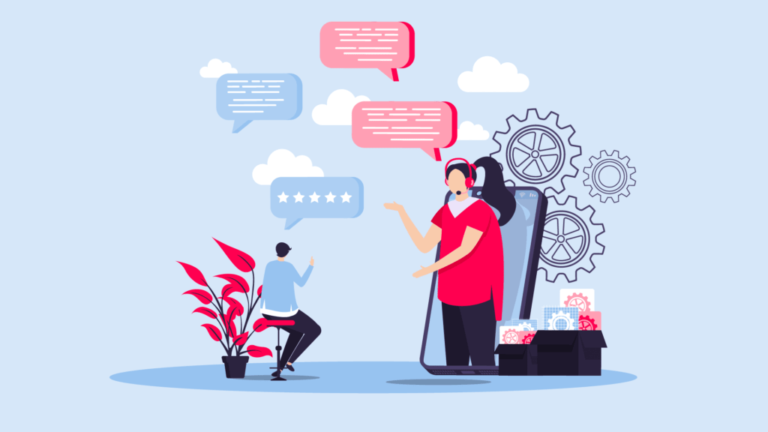Zero-party Data: Have You Tried Asking Your Customers?

Zero-party Data is the New Biofuel
If you’ve been paying attention to data collection trends, you’ve probably been asking yourself, “what is zero-party data?” Well for a while, there’s been a saying going around that “Data is the new oil”. If that’s true, then third-party data is something like leaded gasoline, being phased out due to irresponsible use. Zero-party is then… biofuel? Something more sustainable and responsible.
I think this comparison is getting away from me. Let me explain.
What is Third-party Data?
Third-party data is data that you buy from outside sources that are not the original collectors of that data. Instead, you buy it from large data aggregators that pull it from various other platforms and websites where it was generated. These aggregators pay publishers and other data owners for their first-party data.

Corporate data violations have led to the General Data Protection Regulation (GDPR) in Europe and the California Consumer Privacy Act (CCPA). Apple, Mozilla, and Google have since announced that they’ll phase out third-party cookies by 2023. These issues are not limited just to cookies either. Sloppy data handling by Google has led to Google Analytics being ruled illegal in France, Italy, and several other European states. As such, the ability for companies to perform cross-platform third-party data has significantly decreased.
So, businesses, especially ecommerce businesses, need to develop new strategies to collect data on their customers. In doing so, they’ll be able to provide the best experience for their customers and increase profits.
In the coming years, we’re going to see a shift towards first and zero-party data. This is data that has been provided by customers rather than taken from cookies or other third-party data suppliers.
What are First- & Second-party Data?
Let’s start with first-party data, which represents data provided by the customer unintentionally, simply through browsing your site. This is often stored in first-party cookies and can be used to glimpse the customer’s preferences.

First-party data comes straight from your audience and customers and is generally thought of as more valuable than third-party data. It’s also available to you at no cost, making it cost-effective. For instance, you’ll be able to see what they’re looking at and for how long. Say they’re shopping for a new pair of shorts; you’ll be able to see that.
But first-party data can also be imprecise for similar reasons as third-party can. The data does not treat your users as people but as a collection of data points. This is despite getting the information directly from them this time.
Take the above example of a customer looking for a pair of shorts. If they buy them from you, you aren’t going to know much about them. Maybe you’ll learn their size, style, and color preferences, but not much else. If they return, it won’t be easy to guide them in their customer journey based on this data.

Following this, second-party data is essentially first-party data sold directly to another company rather than through an aggregator. So, instead of collecting data points or buying them from a broker, you get them externally. The main benefit of this is that it helps build a more rounded image of your customers, about their purchasing habits around the internet and not just on your store.
But how can you get more personal data about your customer? Data that will help them make the correct purchase and build trust, so they’ll come back for more?
What is Zero-party Data
Well, have you tried just asking them?
Zero-party data is data that a user has intentionally given you, often in return for something they might want. For instance, if you offer them a discount, they’ll likely sign up for your newsletter. Combining this data with other preferences to create highly personalized marketing campaigns. This is vital in an age where customers want more personalization.
Even if the customer doesn’t exactly know what they want when they visit your store, you’ll be able to use first- and zero-party data to suggest the right products for them, and this is important, at the right time.

You’re no longer guessing what a customer might want based on their digital footprint or misinterpreting the differences between one-off purchases and repeat ones. You’re asking them what they want in this situation rather than assuming that they’ll want similar products than before.
To use the above example, if a visitor to your site has previously bought a pair of shorts, it’s a fair guess to suggest similar styles or colors when they return. But if you use a chatbot to ask the user what they’re there for, you might find that they’re looking for a gift for their partner or a pair of pants now that the weather has turned unexpectedly bad.
How to Collect Zero-party Data
It is pretty easy to collect zero-party data when you do it right. Your registration process and marketing campaigns can include quizzes and conversational pop-ups.
1. Collecting zero-party data during registration
You can easily incorporate zero-party collection into the onboarding process that comes with subscriptions or memberships. Ask questions that give insight into the relationship between the customer and your product, along with basic information like name, phone number, and email address.
You could, for instance, ask about their experience level, workout frequency, and possible health issues affecting their use of fitness products if you are selling them. A great way to collect zero-party data is to register customers in loyalty programs.
You can learn a lot about what your customers like, their preferences, and the products you should present to them on your owned channels by rewarding them with loyalty points for reviews, engaging in preference centers, and participating in surveys and polls.
2. Using your site to collect zero-party data
Provide a personalized list of recommendations to a customer who has landed on your site with a conversational pop-up. In addition, you can ask a question that can lead to a tailored email flow for the customer. In this way, a zero-party data acquisition process will become more natural, and customers will feel more comfortable before they provide an email address and subscribe (or make a purchase).
What you’re now creating with your visitor is a dialogue. First- and third-party data relies on a one-way stream of information, from the customer to you, but zero-party is a conversation.
Forget Third-party: Zero-party Data is the Future
The collapse of third-party data may well be a blessing in disguise for ecommerce retailers. The data you’ll collect in the future will be of much higher quality and allow for a closer relationship between you and your customer. See how Rat & Boa are using data collected by their chatbot to provide personalize the buying journey for their customers.
But with this new kind of data, you’ll need new strategies for utilizing it. Just make sure you don’t get left behind because, after collecting this zero-party data on your customer, you’re still treating it like third-party. That would be like putting leaded diesel in a car that runs on biofuel.
This article was written by Fergus Doyle with visuals by George Radu. It was edited by Beatrice Carraro.



